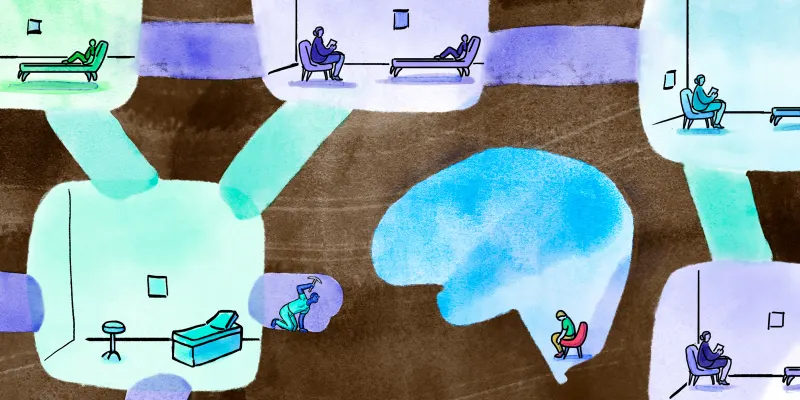In a professional development class during my second year of medical school, my classmates and I received an odd “wellness assignment” — a blatant and glaring oxymoron. We had to participate in wellness events hosted by the medical school that corresponded with the eight dimensions of wellness: social, physical, intellectual, emotional, spiritual, environmental, financial, and occupational. Attendance at each wellness event was worth a variable amount of points, and students needed to attend events in each dimension of wellness, enough so that the point value added up to 100 at the end of the semester. When our instructor finished explaining the assignment, our class burst into a flurry of scathing criticisms.
“You’re treating us like children.”
“So going to the gym for an hour after class doesn’t count as a wellness event, but taking a walk throughout campus during lunch does?”
“I don’t have time for these after-school events!”
The wellness assignment seemed to add insult to the injury of an already restrictive school curriculum that took away much of our autonomy and leisure. The second year of medical school consists of a string of Step 1 preparations, a barrage of standardized patient interviews, and a battery of physical exam assessments that required us to memorize lists of maneuvers to be performed in a designated order for each organ system. Although necessary in the training of future physicians, these rites of passage sometimes felt like hoops we had to jump through to move onto the next year.
I went through medical school searching for a specialty or niche that I would find personally meaningful. The first two years of medical school I felt burned out because there was so much “hitting the spacebar” (sifting through hundreds of online flashcards) or writing out non-intuitive factoids over and over to commit them to memory. Other classmates identified their source of burnout as not having enough fun time to be a young adult, to explore other hobbies, or to travel. Some classmates were burned out by a combination of the two, or neither. The point is that wellness and burnout for each student is an individualized recipe. When I decided I wanted to become a psychiatrist, I knew that I wouldn’t mind working more than 40, 50, or 60 hours a week, as long as I felt that I was participating in meaningful work, be it clinical practice, service, research, or advocacy. I have many friends who emphasize work-life balance to keep them happy and sane.
Given a heterogeneous class of students, wellness curricula often over-conceptualize the model of a “well physician.” At the schools with plentiful resources that account for all eight dimensions of wellness — available for students to try and use throughout their education — these are the schools where students feel well. By contrast, my school’s temporary wellness curriculum (it lasted only a year after student feedback) was the wrong answer to the student wellness question. Indeed, rather than allowing students the autonomy to define wellness for themselves, the school asked us to complete yet another assignment — yet another hoop to jump through. And, critically, we did not see lasting change in terms of wellness resources as a result of the assignment. The school was still, for example, located in a food desert with minimal healthy food options on campus despite the healthy cooking demonstrations organized for the assignment. Similarly, access to counseling staff remained exceedingly limited until my fourth year of medical school. Although my school had the correct thought in investing effort into the eight dimensions of wellness for students and faculty, it unfortunately fell into the standard, ineffective practice of making wellness an externally mandated chore.
As I am training to be a psychiatrist, I’ve come to believe that insight-based therapy is the key to developing healthier working habits, interpersonal relationship skills, and coping strategies. Students and young trainees can develop their own insight into their wellness strategies if they are given sufficient resources and develop meaningful relationships. Having mentors, in particular, to provide guidance, constructive criticism, and praise as trainees move through the trials and tribulations of medical school is a necessary ingredient for wellness. Teaching institutions should adopt a mentoring culture. For the identification of personal values, development of healthy work habits, and identity formation, counselors can serve as mentors. For research and clinical work, mentors can be professors or clinicians. For physical fitness, mentors can be personal trainers and “gym rats.” For spirituality, pastors, rabbis, and devoted students can lead and mentor. The point is, opportunities for relationships and connection can support growth in each aspect of wellness during medical school, and help students have fun with it. What institutions should do is less about laying down a one-size-fits-all wellness mandate, and more about providing the settings and opportunities for these relationships and communities to grow.
This, at least, is one doctor’s cure for wellness.
Do you have a personalized recipe for wellness? Share your ingredients list in the comments!
Katherine Wu, MD, MA, is a preliminary medicine resident who is interested in applying to psychiatry next year. She is passionate about women's mental health, cultural humility in health care, and addiction medicine. In her free time, she likes to tend to her plants, read books, learn about Chinese culture, and stay physically active. Dr. Wu is a 2021–2022 Doximity Op-Med Fellow.
Illustration by April Brust







